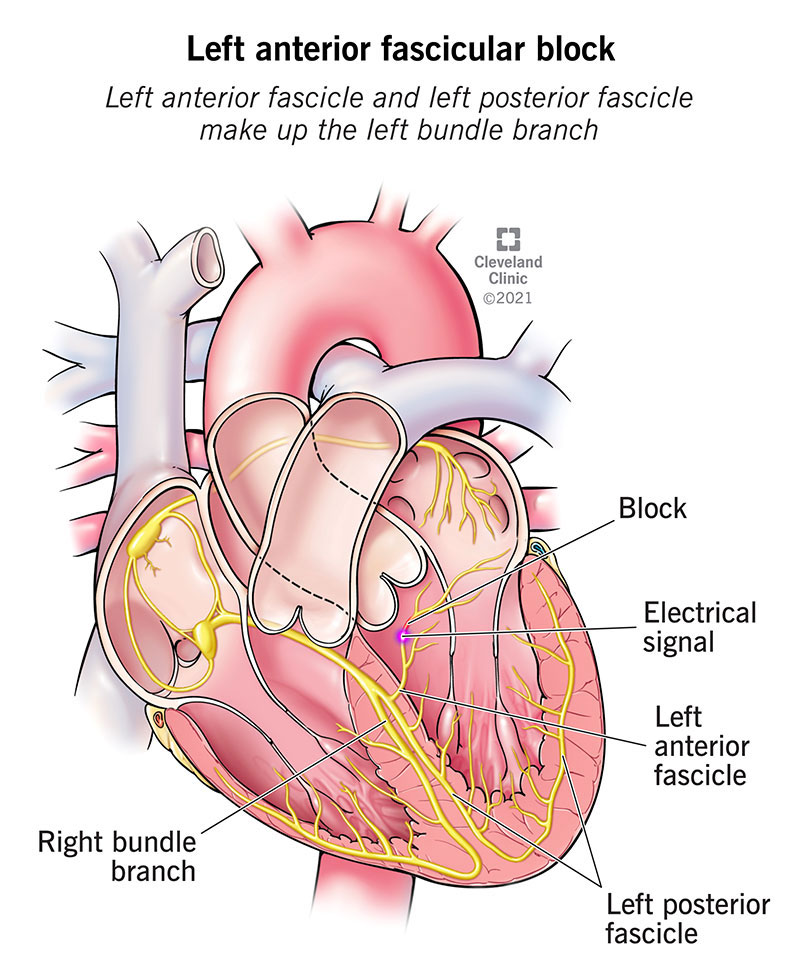With a left anterior fascicular block, the left ventricle in your heart contracts later than normal because your heart’s electrical signal can’t get through when it should. Although people with this issue don’t usually have symptoms or need treatment, they are likely to have other heart issues in the future.
Advertisement
Cleveland Clinic is a non-profit academic medical center. Advertising on our site helps support our mission. We do not endorse non-Cleveland Clinic products or services. Policy

A left anterior fascicular block is the term for something interfering with your heartbeat’s signal when it gets to the left anterior fascicle of your heart’s left bundle branch. This makes your heart’s left ventricle contract later than your heart’s right ventricle.
Advertisement
Cleveland Clinic is a non-profit academic medical center. Advertising on our site helps support our mission. We do not endorse non-Cleveland Clinic products or services. Policy
An estimated 1% to 6% of the population has left anterior fascicular block. Most are senior adults.
Left anterior fascicular block usually has no symptoms. If your case is severe, you may experience:
Researchers think some people may have an inherited tendency to have abnormal electrical signals in their heart’s lower chambers. More established causes include:
Your healthcare provider will use an electrocardiogram (EKG) to diagnose left anterior fascicular block.
Other tests can include:
There’s no specific treatment for left anterior fascicular block, but you’ll most likely need treatment for what caused the block — heart disease.
The outlook is good for young people with left anterior fascicular block, but they rarely have it. A left anterior fascicular block diagnosis may be benign, but researchers found that people with left anterior fascicular block have a higher risk of congestive heart failure, atrial fibrillation and death.
Advertisement
Some studies say left bundle branch block can be a predictor of heart failure, heart attack and sudden cardiac death, especially for people older than 50.
Since left anterior fascicular block can be an indicator or predictor of multiple heart problems, it’s best to take care of your heart to prevent these issues.
You can:
Go to your regular checkups to make sure your healthcare provider can monitor any chronic issues, such as high blood pressure and high cholesterol. Contact your provider if you notice changes in how you feel, especially if you’re out of breath when you walk.
Call 911 if you have these signs of a heart attack:
Although left anterior fascicular block doesn’t need treatment, you should be aware that researchers have seen connections between it and other heart issues. Take care of your heart to protect it from coronary artery disease and heart failure. Keep your checkup appointments with your healthcare provider and be sure to take the medicines your provider prescribed for you.
Advertisement
When your heart rhythm is out of sync, the experts at Cleveland Clinic can find out why. We offer personalized care for all types of arrhythmias.

Last reviewed on 05/24/2022.
Learn more about the Health Library and our editorial process.